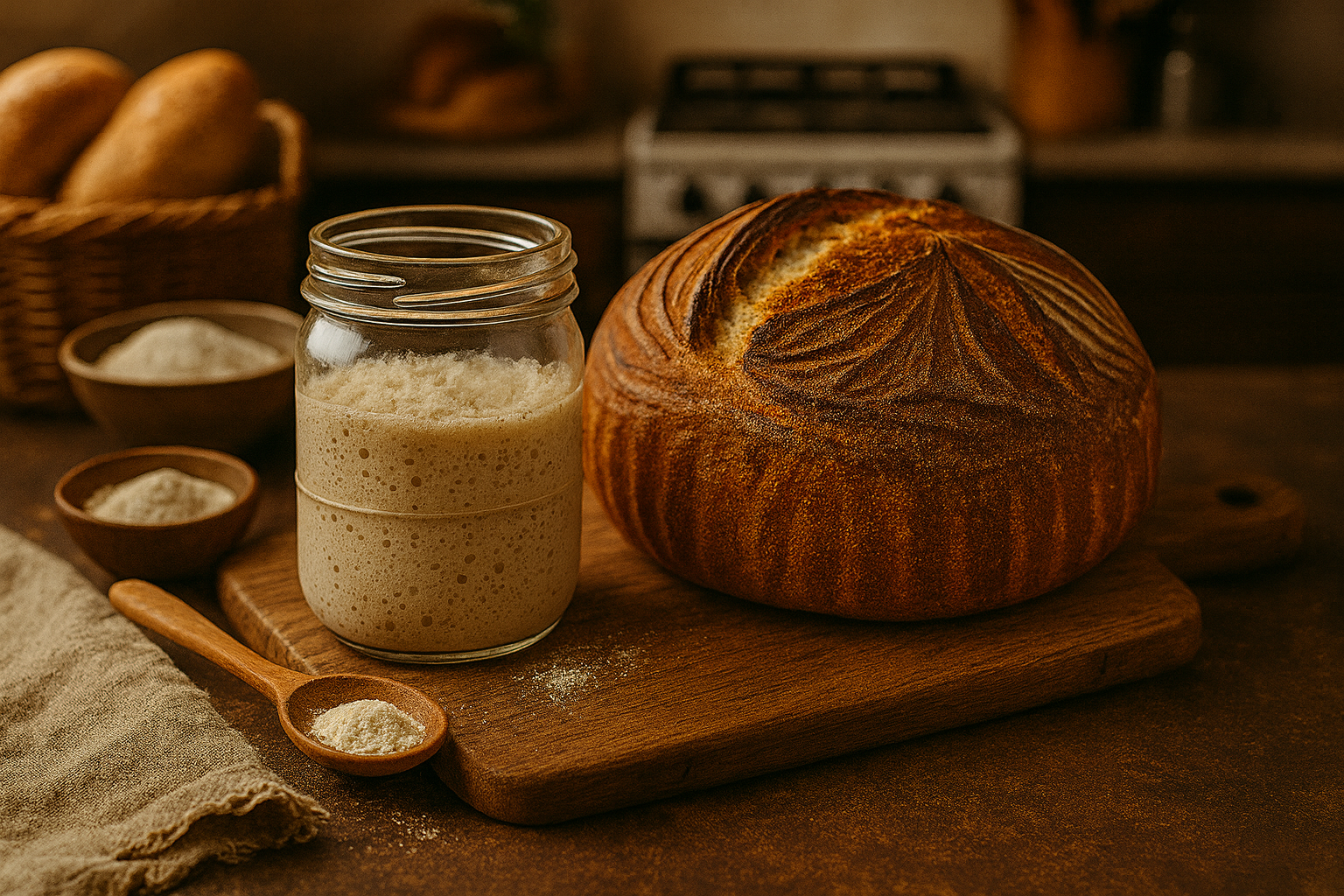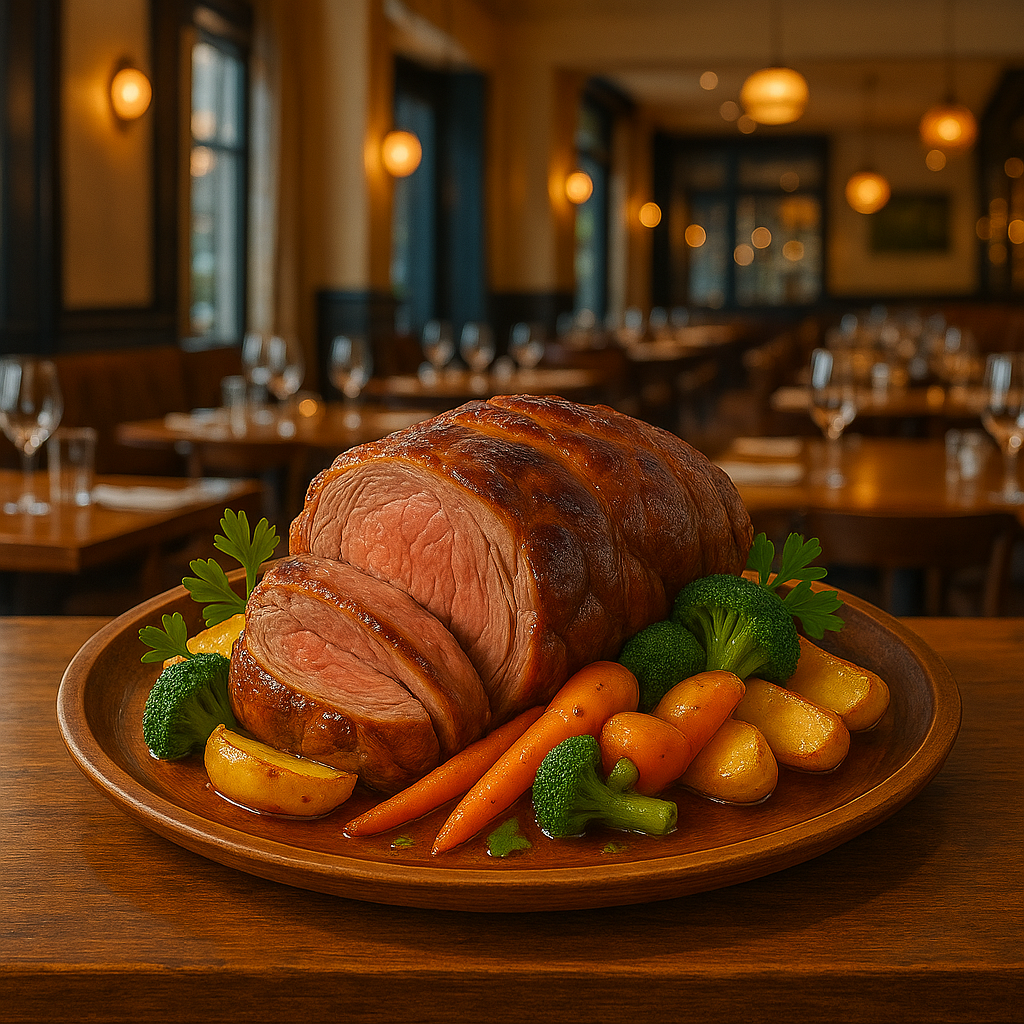Table of Contents
Introduction to the Italian Aperitivo
The Italian aperitivo is a cherished ritual that encompasses far more than the simple act of enjoying a pre-meal drink. Rooted in Italian culture, this practice highlights the importance of social interaction, allowing friends and family to gather and unwind after a long day. The aperitivo is typically enjoyed in the early evening, serving as both a bridge to dinner and a celebration of good company.
The word “aperitivo” derives from the Latin term “aperire,” meaning “to open.” This etymology perfectly encapsulates the essence of this tradition: it opens the door to relaxation and socializing. In many Italian cities, the aperitivo is not only a moment to sip on drinks, such as vermouth or aperol spritz, but also an opportunity to savor small bites or tapas-like snacks, known as “stuzzichini.” This aspect of the aperitivo allows individuals to indulge in culinary delights while fostering meaningful conversations.
Understanding the social significance of the aperitivo is key to appreciating this delightful custom. This practice often serves as a daily ritual for many Italians, marking the transition from work to leisure. It allows individuals to enjoy a moment of respite, promoting camaraderie and connection among patrons. Bars and cafes transform into lively social hubs, where laughter and conversation flow as freely as the drinks.

Embracing the tradition of the Italian aperitivo encourages individuals to slow down and relish the moment. Rather than simply a precursor to dinner, it becomes an experience of enjoyment, relaxation, and connection. In this way, the aperitivo is an integral part of Italian lifestyle, highlighting the cultural emphasis on sharing time with others and appreciating simple pleasures. As we delve deeper into the recipes and variations of the aperitivo, it becomes clear that this practice is about more than just taste; it is about creating lasting memories together.
The History and Evolution of Aperitivo
The tradition of aperitivo in Italy has roots that date back to ancient times, with the concept of pre-dinner drinks evolving significantly over the centuries. Originally, the notion of aperitivo emerged as a way to stimulate the appetite before a meal, aligning with ancient Roman customs that included various concoctions of wine mixed with herbs and spices. These early drinks aimed to enhance gastronomic enjoyment and prepare the palate for food.
Throughout the Middle Ages, this tradition became more defined, particularly in northern Italy, where the Venetians were known for their elaborate social gatherings centered around food and drink. During this period, drinks such as vermouth gained prominence, further shaping the aperitivo experience. The 19th century marked a turning point as the industrial revolution and advancements in distillation techniques led to a diverse array of flavored spirits being made available. This evolution resulted in the creation of iconic Italian aperitifs like Campari and Aperol, which would soon become staples of the aperitivo culture.
The aperitivo tradition continued to flourish throughout the 20th century, particularly after World War II, as social norms changed and leisure time became more apparent. Italians began to embrace the concept of gathering in bars and public spaces during the early evening for leisurely drinks. This communal aspect of aperitivo not only reflects Italian values of hospitality and togetherness but also highlights regional variations. Regions like Piedmont favor drier drinks, while the south leans toward sweeter options, showcasing the diversity within the tradition.
In recent decades, globalization has further transformed the aperitivo scene, introducing international influences while preserving its essence. This blend of local customs and global flavors has made aperitivo a beloved practice worldwide, illustrating how a traditional Italian custom continues to evolve while maintaining its social and cultural significance.
Essential Ingredients for a Perfect Aperitivo
Creating a traditional Italian aperitivo necessitates a careful selection of key ingredients that embody the essence of this delightful pre-dinner ritual. The foundation of any aperitivo typically begins with a base spirit, which can include popular options such as gin, vodka, or rum. These spirits impart the desired strength and character to the drink, setting the tone for the entire experience. For a more authentic touch, consider using artisanal spirits that reflect regional craftsmanship and flavor profiles.
Aperitif wines also play a crucial role in crafting the ideal aperitivo. Vermouth, both sweet and dry, is a staple in Italian culture, offering a rich blend of botanicals that elevate the complexity of the drink. Other popular choices include bitter aperitifs like Campari or Aperol, which provide a uniquely Italian flavor that is both invigorating and refreshing. These aperitifs can serve as the backbone of a variety of cocktails, making them versatile choices for any gathering.
Mixers are equally important when constructing a perfect aperitivo. Traditional choices include soda water, tonic water, or even sparkling wine, which can lighten the cocktail and add effervescence. Fresh juices, such as citrus or cranberry, can introduce a layer of brightness and balance out the bitterness of certain spirits. Additionally, incorporating freshly chopped herbs or spices can enhance the flavor profile, providing an aromatic experience with every sip.
Finally, garnishes are essential for both aesthetic appeal and flavor enhancement. Olives, lemon wedges, or fresh herbs like basil or rosemary are commonly used in aperitivo cocktails to complement the base ingredients. The right combination of spirits, aperitif wines, mixers, and garnishes creates a truly authentic Italian aperitivo that not only delights the palate but also honors the rich traditions surrounding this cherished aspect of Italian culture.
Classic Aperitivo Recipes to Try
Creating a delightful Italian aperitivo experience at home can be easily achieved through a few classic recipes. These iconic drinks not only embody the spirit of Italian culture but also serve as enjoyable refreshments to kick off any gathering. Below, we present three quintessential aperitivo recipes: the Negroni, Spritz, and Americano.
Negroni
Ingredients:
– 1 part gin
– 1 part Campari
– 1 part sweet vermouth
– Orange slice or twist for garnish
Preparation:
1. In a mixing glass filled with ice, combine the gin, Campari, and sweet vermouth.
2. Stir well until the mixture is chilled.
3. Strain the drink into a rocks glass filled with ice.
4. Garnish with an orange slice or twist. Enjoy your Negroni!
Spritz
Ingredients:
– 3 parts Prosecco
– 2 parts Aperol (or Campari for a stronger taste)
– 1 part soda water
– Orange slice for garnish
Preparation:
1. Fill a wine glass with ice cubes.
2. Pour in the Prosecco, then add the Aperol, followed by the soda water.
3. Stir gently to combine the flavors.
4. Garnish with a slice of orange for a vibrant finish.
Americano
Ingredients:
– 1 part Campari
– 1 part sweet vermouth
– Soda water to top
– Lemon twist for garnish
Preparation:
1. Fill a glass with ice, then add the Campari and sweet vermouth.
2. Top the drink with soda water to taste.
3. Stir gently to mix the ingredients.
4. Garnish with a lemon twist for a refreshing touch.
Each of these aperitivo recipes captures the essence of Italian tradition and offers a delightful start to an evening gathering. By following these step-by-step instructions, you can easily recreate these drinks at home and enjoy the experience of a true Italian aperitivo.
Aperitivo Food Pairings: What to Serve
An integral part of the aperitivo tradition is the selection of food that accompanies the drinks, enhancing the overall experience. The purpose of the aperitivo is to stimulate the appetite without overshadowing the beverages. Typically, the best choices involve light bites that are simple yet flavorful. Start with an assortment of cheeses, such as Parmigiano-Reggiano, Gorgonzola, and Provolone. These cheeses not only complement various aperitivo drinks but also introduce a range of textures and flavors that appeal to the palate.
Cured meats are another staple in aperitivo offerings. Prosciutto, Salami, and Capicola can be served thinly sliced, allowing guests to savor their rich, savory profiles. Pairing these meats with artisanal bread or crackers can create a delightful contrast that enhances each sip. Moreover, consider incorporating marinated olives, which provide a briny flavor that complements the drinks while also serving as an excellent finger food option.
Vegetable-based options such as bruschetta topped with tomatoes, basil, and a drizzle of balsamic reduction can add freshness to the table. Other light bites include stuffed peppers, artichoke hearts, or roasted nuts, each contributing a unique element that harmonizes with the aperitivo experience. When presenting these food pairings, consider a visually appealing arrangement on a platter or wooden board. This not only enhances the aesthetic but also invites guests to graze and socialize comfortably.
The key to a successful aperitivo spread is variety; including different tastes, textures, and colors. This ensures that there is something for everyone while encouraging a relaxed atmosphere perfect for conversation and enjoyment. Choosing high-quality ingredients and being mindful of presentation can turn a simple gathering into a memorable celebration of the Italian aperitivo tradition.
Setting the Scene: Creating the Perfect Atmosphere
To truly capture the essence of an Italian aperitivo, it is essential to create a warm and inviting atmosphere that reflects the tradition of leisurely socializing. The perfect setting combines thoughtful decor, carefully selected music, elegant table arrangements, and strategic lighting, all of which contribute to the enjoyment of your happy hour.
When it comes to decor, consider using natural materials like wood, linen, and wicker to evoke a rustic Italian charm. Fresh florals or herbs, such as basil or rosemary, can add a fragrant touch and enhance the authentic feel of your space. Small touches like vintage Italian ceramics and colorful tableware can also provide visual interest. Aim for a cohesive color palette that aligns with the warmth and inviting spirit of an Italian evening.
Music plays a crucial role in setting the mood for an aperitivo. Choose a playlist that features soft Italian melodies or classic jazz tunes that encourage relaxed conversation. The aim is not to overpower the atmosphere but to create an elegant backdrop that fosters a sense of intimacy among guests. Additionally, consider including live Italian guitar music to elevate the experience and immerse your guests in the spirit of la dolce vita.
Lighting is another important element in crafting the perfect aperitivo ambiance. Soft, warm lighting creates a cozy and welcoming environment. Use candles or string lights to achieve a warm glow, avoiding harsh overhead lights that can disrupt the mood. If outdoors, consider utilizing lanterns or fire pits to enhance the atmospheric charm. Lastly, a well-set table, adorned with simple yet elegant place settings, can elevate the entire experience and invite guests to sit, relax, and indulge in the delicious bites and drinks associated with the aperitivo tradition.
Regional Variations of Aperitivo in Italy
Aperitivo, the cherished Italian tradition of socializing before dinner, varies significantly across different regions of Italy, each offering a unique experience and a distinct range of flavors. In Northern Italy, particularly in Venice, the classic Spritz is especially popular. This refreshing cocktail, made with Prosecco, Aperol or Campari, and soda water, beautifully showcases the region’s love for light and bubbly beverages. Venetians often accompany their Spritz with cicchetti, small plates of local snacks that include cured meats, seafood, and various crostini, resulting in a vibrant pre-dinner routine.
Traveling south to Lombardy, particularly in Milan, one finds the Negroni, a richer, more robust drink that includes equal parts gin, vermouth rosso, and Campari. Traditionally served with a slice of orange, the Negroni is often enjoyed alongside savory bites, such as olives or taralli, a popular Italian snack. This region emphasizes the balance between bitter and sweet flavors within both the cocktails and the accompanying food.
In the central regions of Italy, the aperitivo culture begins to incorporate the Mediterranean influences. In Tuscany, for example, locals might gravitate towards the famous Bellini, made with Prosecco and peach puree. The focus on fresh, regional ingredients like ripe peaches reflects the Tuscan dedication to quality. This drink is often enjoyed with bruschetta topped with seasonal vegetables or homemade spreads.
As one explores further into Southern Italy, particularly in Naples, the tradition of aperitivo might feature a diverse array of local wines, such as the robust Aglianico or lighter Falanghina, served alongside Neapolitan street foods like arancini or sfogliatelle. Each region in Italy brings its flavors and traditions to the aperitivo experience, ensuring that this cultural practice is as diverse as the country itself.
Modern Twists on Traditional Aperitivo
The concept of aperitivo, a cherished Italian pre-dinner ritual, has evolved over the years, inspiring innovative recipes that blend traditional elements with contemporary flair. By incorporating current culinary trends and preferences, modern aperitivo offerings reflect a dynamic fusion of flavors and experiences. Creative cocktails are at the forefront of this transformation, showcasing classic ingredients while introducing unexpected combinations that captivate the palate. One such cocktail is the Rosemary Grapefruit Spritz, which combines earthy rosemary with the invigorating zest of grapefruit juice, a refreshing alternative to the classic spritz.
Additionally, mixologists are experimenting with spirits that resonate with modern tastes, like artisan gin or flavored vodkas, while maintaining connections to classic Italian liqueurs such as Aperol or Campari. Enhanced with fresh herbs and fruits, these cocktails epitomize the refreshing essence of the aperitivo tradition while appealing to adventurous drinkers. Another noteworthy option is the Negroni Sbagliato, a delightful spin on the classic Negroni, which substitutes prosecco for gin, making it lighter while still delivering traditional flavors.
In tandem with these innovative drinks, the food offerings during aperitivo hours have also undergone delightful transformations. Traditional staples such as olives, cured meats, and cheeses can be complemented by contemporary tweaks, such as spiced nuts or artisanal dips. For instance, serving bruschetta topped with avocado and cherry tomatoes interlaces the beloved Italian starter with an unexpected twist that complements many modern diets. Furthermore, fusion snacks, like Italian-inspired sushi rolls incorporating prosciutto and mascarpone, connect culinary heritages while stimulating creativity and intrigue in every bite.
This harmony between classic traditions and modern innovations encapsulates the evolving essence of aperitivo, inviting a broader audience to immerse themselves in this symbolic Italian experience while maintaining a strong connection to its roots.
Tips for Hosting Your Own Aperitivo Hour
Hosting an aperitivo hour at home can be a delightful experience, bringing together friends and family for a relaxed evening filled with exquisite tastes and enjoyable conversations. To ensure a successful gathering, it is imperative to consider various aspects, including guest management, menu preparation, and dietary accommodations.
Begin by curating your guest list. Since the aperitivo concept revolves around casual mingling, aim for a small to moderate group, ideally between six to twelve people. This size fosters conversation and ensures that everyone feels included. Once your guests are confirmed, establish a duration for the event; typically, an aperitivo hour lasts around two to three hours. This timeframe allows guests to enjoy their drinks and snacks without feeling rushed.
Next, focus on the food and drink selections. A well-balanced menu is essential. Consider an array of beverages, such as classic Italian spritzes, wines, and non-alcoholic options to accommodate everyone’s preferences. For the food, curate an assortment of light bites, including olives, cured meats, and assorted cheeses, expertly arranged on a platter for easy access. Note that presentation can enhance the aesthetic appeal and overall experience of the event.

Additionally, be mindful of dietary restrictions. Reach out to your guests in advance to inquire about any specific needs, such as vegetarian, vegan, or gluten-free options. By incorporating these considerations into your menu planning, you create an inclusive environment, ensuring that every guest feels welcomed and attended to.
Finally, create an inviting atmosphere. Set up your space with comfortable seating and ambient lighting, perhaps soft music playing in the background. This will help cultivate a relaxed ambiance, allowing guests to unwind and fully enjoy the aperitivo experience. With these tips in mind, you can successfully host an aperitivo hour that is both enjoyable and memorable for all attendees.





